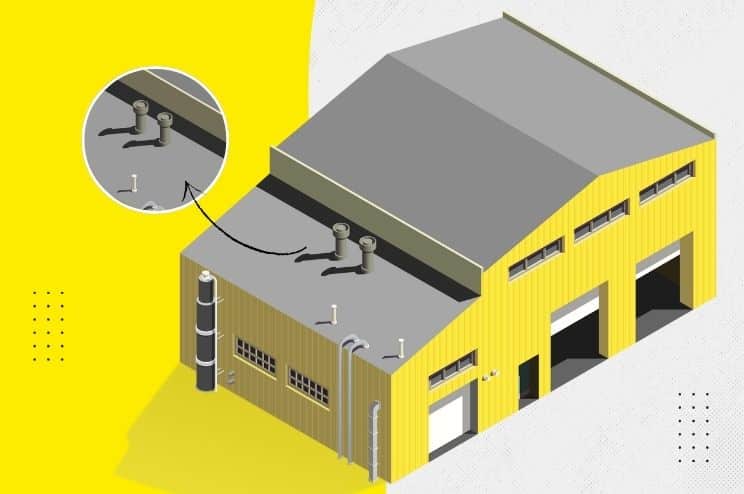When you consider your roof’s purpose, chances are you think primarily of its protection against rain, snow, etc. And for good reason! A roof’s #1 job is to have you and your loved ones covered. But more goes into a successful roofing system than simply shielding you from obvious weather elements.
“What else?” you may ask.
Ventilation. The significance of proper roof ventilation cannot be overstated, especially in areas like NJ and PA which are prone to higher humidity. And although it’s often neglected (and some homes don’t have it), effective ventilation is the key to a healthy roof and home.
The Basics of Roof Ventilation
First of all, what is roof ventilation? Simply put, it’s a system designed to create continuous airflow in the attic space between the roof deck and the insulation. It works by allowing outside air to enter through intake vents and exit through exhaust vents at the ridge or peak of the roof. There are various types of ventilation systems but all are designed to maintain a balanced airflow in the attic space.
Why Roof Ventilation is Essential
Proper ventilation ensures that your roof and attic stay dry and cool, preventing damage that can compromise the integrity of your home. But it’s about more than just protecting the roof structure; it’s also about creating a healthier living environment for the occupants. Let’s look at some specifics:
1. Preventing Mold and Mildew Through Ventilation
Mold and mildew thrive in moist, stagnant environments. An inadequately ventilated attic provides the perfect conditions for these fungi to grow, potentially leading to health issues for residents. By maintaining a dry attic through effective ventilation, the risk of mold and mildew is significantly reduced.
2. Combating Wood Rot with Adequate Airflow
Wood rot is a formidable enemy of roof structures, leading to weakened frames and the need for expensive repairs. It occurs when moisture persists in wood, allowing fungi to decompose the material. Proper ventilation keeps your attic wood dry and safe from rot, preserving the strength and stability of the roof.
3. Avoiding Ice Dams in Humid Climates
Ice dams form when heat from the attic melts snow on the roof, which then refreezes at the eaves, creating a dam that prevents proper drainage. This can lead to water backup under the shingles, causing leaks and damage. Adequate ventilation ensures a uniform roof temperature, preventing the conditions that lead to ice dams.
The Long-term Benefits of Proper Roof Ventilation
Beyond the immediate advantages of preventing damage, proper ventilation also contributes to energy efficiency, leading to the one thing every homeowner can appreciate; lower heating and cooling bills! It also extends the lifespan of roofing materials by keeping them dry and at a stable temperature, avoiding the thermal stress that can cause premature aging (another cost-saving benefit).
Let’s Review
As you can see, proper roof ventilation affects everything from energy efficiency, home comfort, structural integrity, and even the safety of the inhabitants. Consulting with roofing professionals to assess and address your ventilation needs is a crucial step towards ensuring the longevity and performance of your roofing system. By understanding and implementing effective ventilation strategies, homeowners can protect their investment and enjoy a safer, more comfortable living environment for years to come!
Frequently Asked Questions
Q: How do I know if my roof ventilation is adequate?
A: Look for signs of moisture, such as mold or wood rot, and check attic temperatures. A professional assessment can provide a definitive answer.
Q: Can I install additional vents myself, or should I hire a professional?
A: While some homeowners may tackle this as a DIY project, professional installation ensures optimal placement and efficiency.
Q: Are there signs that indicate my ventilation system isn’t working properly?
A: Yes, if you see ice dams in winter, excessive heat in the attic, and visible moisture or mold growth, it may mean your ventilation system isn’t working properly.
Q: How often should roof ventilation systems be checked or maintained?
A: Annual inspections are recommended, but monitoring after severe weather events is also wise.
Q: Can proper ventilation really make a significant difference in preventing ice dams?
A: Absolutely. By maintaining an even roof temperature, ventilation plays a critical role in preventing the melt-refreeze cycle that leads to ice dams.

